Text
Get To Know Me! Everyone, Here is my First time doing Blogs in the App ✨🤎
Get to Know Me! My Future Students!
Greetings, Future Learners of the Linguistic realm!
I am Jake Allen Bautista Lorenzo, but you may know me by my pen name, Raylleen. A dedicated wordsmith, my heart beats to the rhythm of fiction, with a special affinity for the dance of romance across the pages. My voyage into the vast expanse of literature is not confined to storytelling alone; I find solace in crafting poetry that whispers emotions and prose that paints vivid landscapes of imagination.
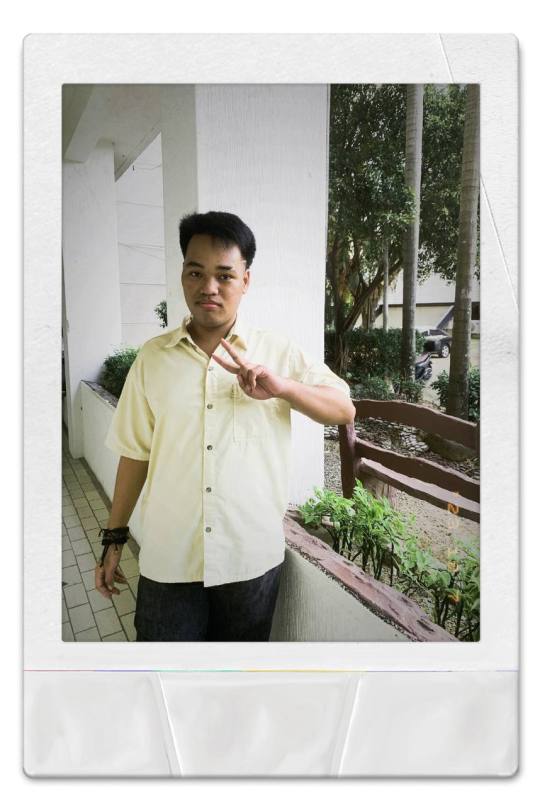
Embracing the beauty of linguistic artistry, I find joy in the unconventional—delighting in the realm of delusions that spark creativity and set my imagination ablaze. In these flights of fancy, I discover a unique liberation, a sense of happiness that blooms when the mind is unshackled, free to traverse the limitless horizons of thought. The freedom to be authentically myself, unrestrained by the boundaries of convention, is an exhilarating experience, akin to riding the winds of uninhibited expression.

Literature, for me, is not merely an academic pursuit but a passionate love affair. I immerse myself in the vast tapestry of words woven by literary giants, drawing inspiration from the eloquence of the masters who have paved the way. Every turn of a page is a step into a world of possibilities, a celebration of the written word that transcends time and space.
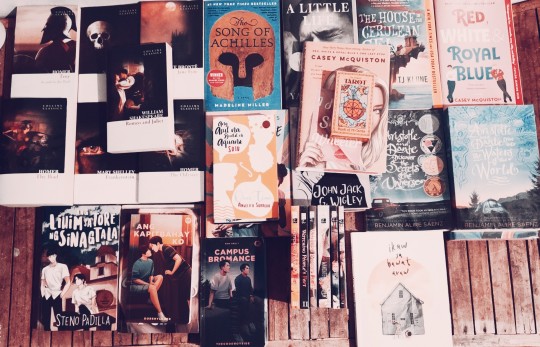
I, travel to traverse the landscapes of fiction, poetry, and prose, and my love for literature is an ever-burning flame. It is a flame that illuminates the path of self-discovery, inviting kindred spirits to join me on this linguistic odyssey. So, fellow language enthusiasts, let us embark on this journey together, where the magic of words unfolds, and the symphony of expression plays on the strings of our shared passion for the written art.

3 notes
·
View notes
Text
A Letter for my Future Students! See you all! ✨🤎
A Letter to my Future Students
Dear Future Students,
In the tapestry of academia, I find myself poised at the loom, ready to weave a narrative that transcends the conventional boundaries of teaching. My pen dances on the parchment, inscribing not just a letter but an invitation to embark on a collective odyssey—a journey where education morphs into self-discovery, development, and boundless possibilities.
As I ink these words, a surge of eagerness courses through me. This isn't a missive to a mere class; it's a beckoning to a shared exploration where learning is not confined by the limitations of four walls but unfolds as a trajectory of resilience and enlightenment. Let me illuminate this path by affirming that our classroom is a sanctuary for mistakes, not a battleground against them. Errors, far from hindrances, are pivotal milestones on the road to triumph. Embrace them, for they shape the bedrock of your strength and the innovators of your character.
Dear students, relish each moment of this scholarly escapade as we plunge into the depths of knowledge together. Your peers are not just classmates but fellow sojourners on this exhilarating adventure. Treasure the shared victories, the collaborative efforts, and the pauses laden with laughter—these shall etch themselves as indelible memories on the canvas of your academic journey.
Remember, education isn't confined to the quadrilateral confines of this room; it envelops your entire life. Envision a realm where accomplishments, revelations, and global contributions are integral to your destiny. Don't merely dream; plan, set goals, and let the fervor for learning propel you forward. Your plans are the cartographers of your aspirations, and your dreams serve as the magnetic north.
In this pedagogical realm, I wear not just the hat of a teacher but the mantle of a mentor, a guide, and a surrogate parent. My commitment extends beyond the classroom, encompassing the sculpting of your potential, igniting your curiosity, and fostering an environment where every question finds validation, and every voice resonates.
Understand, dear students, that I stand by as a pillar of support, a voice of encouragement, and a cheerleader for your victories, no matter how modest. Your growth is my ultimate gratification, and your triumphs echo as my own. So, fasten your seatbelts, broaden your intellectual horizons, and brace yourselves for an exhilarating journey adorned with challenges and triumphs. The voyage has set sail, and I am thrilled to be your companion on this extraordinary expedition.
2 notes
·
View notes
Text
Here's my Blog regarding Common Miscommunication Mishaps! ✨🤎 Enjoy Reading!
Common Communication Mishaps
In the intricate dance of communication, missteps often occur when we presume a shared dance floor of understanding, only to find ourselves cha-cha-ing to different beats. The labyrinth of language proves treacherous when draped in ambiguity, its cloak casting shadows of confusion across the conversational stage. Imagine a symphony of voices, each note carrying its own melody, but alas, poor listening plays the discordant undertone, drowning out the harmonious potential. Feedback, the elusive conductor's baton, is too often left untouched, leaving our symphony unsynchronized. Cultural nuances become the unseen dancers, pirouetting in the background, occasionally causing the entire routine to stumble. In this digital era, the overture of technology often lacks the warmth of face-to-face cadence, leading to the digital echoes of miscommunication. Emotions, those unpredictable soloists, hijack the stage, causing a cacophony of misinterpretations. The assumption that everyone waltzes to the same communication beat proves a fallacy, as diverse styles clash and create a linguistic kaleidoscope. Inconsistency in messaging orchestrates a cacophony, and a failure to adapt leaves us out of step, stumbling through the intricate choreography of human connection.
1. Assuming Shared Understanding:
Miscommunication often arises when individuals assume that others share the same background knowledge or context. Clarity can be compromised when assumptions about shared understanding go unchecked.

2. Ambiguous Language:
The use of vague or ambiguous language can lead to misrunderstandings. Words or phrases with multiple interpretations may result in communication mishaps as different parties interpret them in various ways.

3. Poor Listening Skills:
Ineffective listening is a common barrier to clear communication. When individuals are not fully engaged in listening, important details may be overlooked, leading to confusion and misconceptions.

4. Lack of Feedback:
Failure to provide or seek feedback can hinder effective communication. Without confirmation that a message has been understood as intended, there is a risk of misinterpretation and subsequent errors.

5. Cultural Differences:
Cultural nuances and variations in communication styles can contribute to misunderstandings. What may be acceptable or clear in one culture might be perceived differently in another, leading to unintended consequences.
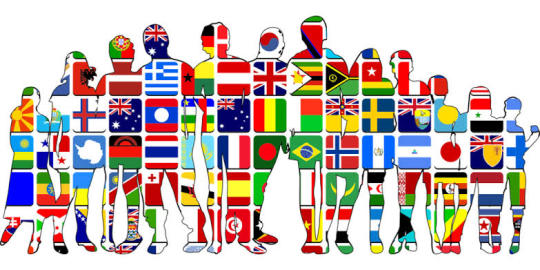
6. Overreliance on Technology:
In the digital age, miscommunication can occur through reliance on electronic communication without the nuances of face-to-face interaction. Messages may be misinterpreted due to the absence of non-verbal cues.

7. Emotional Influences:
Strong emotions can cloud communication. When individuals are emotional, whether due to stress, frustration, or excitement, it can impact their ability to convey or interpret messages accurately.

8. Assuming Similar Communication Styles:
People have diverse communication styles, ranging from direct to indirect. Assuming everyone shares the same style can result in confusion or perceived rudeness.
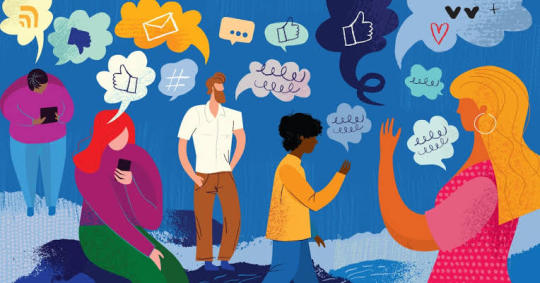
9. Inconsistent Messaging:
When there is inconsistency in the messages conveyed by different sources or at different times, confusion can arise. Consistency is key to avoiding mixed signals and misunderstandings.

10. Failure to Adapt:
Not adjusting communication style based on the audience or situation can lead to misalignment. Flexibility in communication is crucial for ensuring that the message is appropriately tailored for the context and audience.

2 notes
·
View notes
Text
Here's my Blog About Improving Communication Competence! Enjoy! ✨🤎
Improving Communication Competence
In the intricate tapestry of human connection, the art of communication stands as a masterpiece waiting to be crafted. Picture this: communication competence, a polymorphic gem, intricately cut and refined through the conscious chiseling of effort. The journey commences with a voyage inward, a self-discovery odyssey where the seeker unravels the threads of their communication intricacies. Like an alchemist in pursuit of the philosopher's stone, one must actively solicit the elixir of feedback, a potion that reveals the secret passages to improvement. Imagine a garden of understanding, where diverse perspectives bloom, nurtured by the genuine curiosity that transforms empathy into the fertile soil of effective communication. The skill of listening becomes a finely tuned instrument, playing the symphony of connection by giving undivided attention, silencing distractions, and engaging in a dance of reciprocity. Clarity, a beacon in the linguistic night, emerges as the lighthouse—precise language casting light on the waters, dispelling the fog of confusion. Flexibility, a shape-shifting protagonist, adapts its form to suit the varied landscapes of context and audience. In the grand narrative, consistency becomes the recurring motif, the trustworthy melody that harmonizes messages, building bridges of reliance. Non-verbal communication, the unsung hero, adds strokes to the canvas, where body language and gestures speak volumes in the silent dialogue. And amidst the crescendo of communication, resilience takes center stage—a phoenix rising from the ashes of misunderstandings, viewing them not as defeats but as stepping stones for growth. As the curtain falls on each interaction, the tapestry woven is not just a communication competence but a masterpiece of human connection, a work of art continually honed with every conscious stroke.
Key Strategies for Enhancing Communication Competence:
1. Self-awareness:
Reflect on your communication style, identifying strengths and weaknesses.
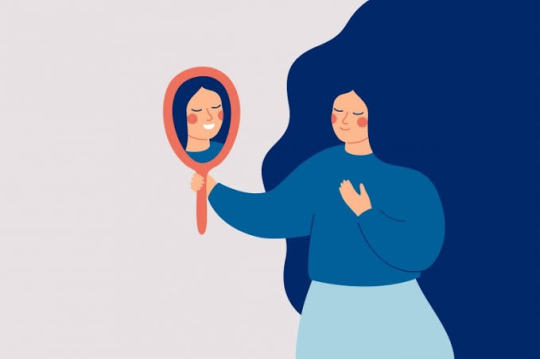
2. Feedback:
Actively seek constructive feedback from peers, mentors, or colleagues to gain valuable insights.

3. Empathy: Develop a genuine interest in understanding others' perspectives, fostering empathy in your communication.

4. Listening Skills:
Improve your listening skills by staying fully present, minimizing distractions, and demonstrating active engagement.

5. Clarity:
Strive for clarity in your expressions, using precise language and avoiding unnecessary complexity.

6. Flexibility:
Adapt your communication style to different contexts and audiences, demonstrating flexibility in your approach.

7. Consistency:
Maintain consistency in your messaging to build trust and reliability among your peers.

8. Non-verbal Communication:
Pay attention to your body language and gestures, as they contribute significantly to effective communication.

9. Resilience:
Approach misunderstandings as opportunities for growth, maintaining resilience in the face of communication challenges.

10. Continuous Practice:
Cultivate communication skills through regular practice, engaging in conversations to refine and reinforce your competence.

2 notes
·
View notes
Text
Traditional Vs Modern Language Teaching Materials! Here's my Blog ✨🤎
Traditional Vs. Modern Language Teaching Materials
Traditional language teaching materials are like time-worn manuscripts, carrying the weight of history. Textbooks and chalkboards echo with the whispers of the past, embracing a sense of nostalgia. In contrast, modern materials are the sleek smartphones of education, interactive and dynamic. They dance with multimedia, embracing a symphony of visuals and sounds. It's a classic tale of parchment versus pixels, where the pen meets the touchscreen in the eternal saga of language learning.
Traditional Language Teaching Materials
Imagine a vibrant language classroom adorned with a linguistic tapestry – a giant word wall splashed with vivid verbs, nouns, and adjectives. Interactive language games come to life with magnetic poetry boards, fostering a dynamic atmosphere where students eagerly rearrange words to construct sentences. In the corner, a whimsical grammar garden blooms with colorful parts of speech, creating a visual symphony that transforms language learning into a lively, immersive experience.
Example of Traditional Language Teaching Materials:
1. Visual Aids:
A compelling visual aid for language learning is a vibrant, large-scale mind map prominently displayed in the classroom. This meticulously crafted visual organizes key language concepts, linking vocabulary themes, grammar rules, and cultural elements in a visually appealing and interconnected manner. Utilizing a spectrum of colors, it not only captures attention but also aids in categorizing and recalling information effectively. The central theme, perhaps the target language's core principles, serves as the focal point, with branching pathways guiding learners through related topics. This dynamic visual aid transforms abstract linguistic concepts into a tangible, accessible roadmap, fostering a more engaging and comprehensive learning experience for students.

2. Flash Cards:
Flashcards are concise, portable learning tools featuring a word, phrase, or concept on one side and a corresponding image or definition on the other. Used in language teaching, they reinforce vocabulary, facilitate word-picture associations, and make memorization interactive and enjoyable.
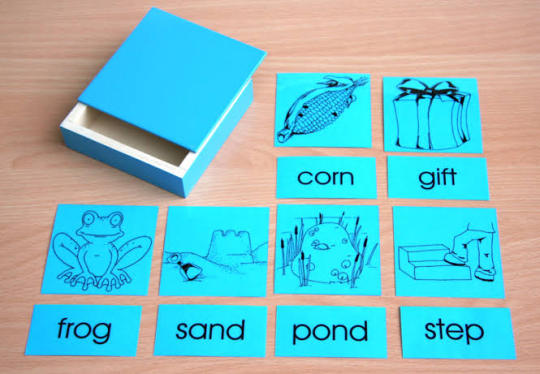
3. Mind Maps:
Mind maps are graphical representations that visually organize information around a central theme. In language education, they serve as dynamic tools for brainstorming, structuring ideas, and revealing relationships between words or concepts. Mind maps stimulate creative thinking and enhance memory retention by providing a holistic view of language elements.

4. Creative Learning Materials:
Creative learning materials encompass a variety of inventive resources designed to make language learning engaging and effective. These may include games, puzzles, role-playing activities, and hands-on projects. By integrating creativity into language education, these materials promote active participation and reinforce language skills in a lively and memorable way.
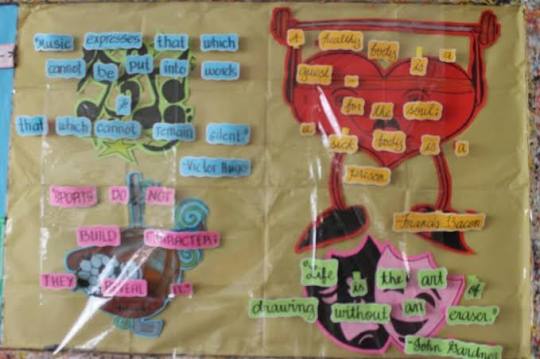
5. Story Boards:
Storyboards are sequential visual representations that break down a narrative into key scenes or events. In language teaching, storyboards facilitate storytelling and language production. Learners can use them to plan, illustrate, and present narratives, enhancing their linguistic abilities while fostering creativity and storytelling skills. Storyboards provide a structured framework for language learners to express themselves in a narrative format.
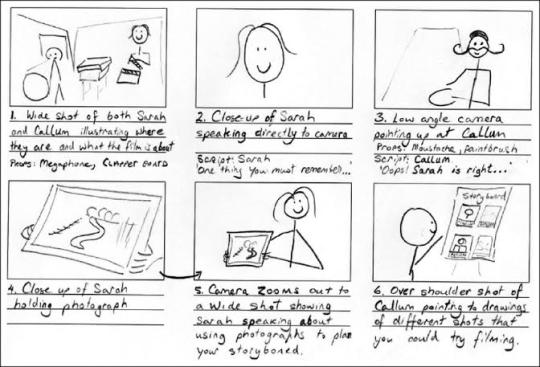
Modern Language Teaching Materials
Imagine a futuristic language learning experience where sleek, holographic language modules materialize in the air, seamlessly blending technology and education. These avant-garde materials use augmented reality to project interactive lessons, where students can virtually explore language landscapes, converse with lifelike avatars, and manipulate 3D linguistic constructs. Each module is a digital masterpiece, adapting to individual learning styles and dynamically responding to progress. Gamified challenges, real-world simulations, and AI-driven feedback transform language acquisition into an immersive adventure. This cutting-edge approach to language teaching materials not only embraces innovation but sparks a sense of curiosity and excitement, propelling learners into a technologically enriched linguistic journey.
Examples of Modern Language Teaching Materials:
1. Interactive Apps:
Cutting-edge language teaching materials often include interactive apps that engage learners through gamified exercises, real-life scenarios, and personalized feedback. These apps cater to various proficiency levels, offering dynamic content and adaptive learning paths, making language acquisition both enjoyable and effective.

2. Augmented Reality (AR) Flashcards:
Modern language teaching embraces AR flashcards that bring static images to life. By using a smartphone or tablet, learners can hover over these cards, triggering immersive experiences. For instance, pointing a device at a vocabulary card might generate 3D models, pronunciation guides, or interactive quizzes, enhancing the overall learning engagement.

3. Online Simulations and Virtual Reality (VR):
Language teaching materials now leverage online simulations and VR experiences. These immersive environments enable learners to practice language skills in realistic scenarios, such as ordering food in a restaurant or navigating a foreign city. VR enhances cultural understanding and fosters practical language application.
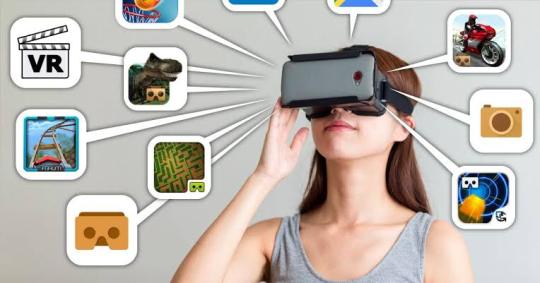
4. Authentic Multimedia Texts:
Contemporary language materials incorporate authentic multimedia texts like podcasts, vlogs, and news clips. These real-world examples expose learners to diverse accents, colloquial expressions, and current events, promoting cultural awareness and providing relevant context for language acquisition.

5. Digital Collaborative Platforms:
Language teaching materials often include digital collaborative platforms where students can engage in virtual language exchange, collaborative projects, and real-time communication. These platforms facilitate interaction with native speakers, peer collaboration, and authentic language use, breaking down geographical barriers and enriching the learning experience.

Advantages and Disadvantages of Traditional Language Teaching Materials
Traditional language teaching materials, such as textbooks and chalkboards, offer a structured foundation and can be cost-effective, but they may lack dynamism and struggle to capture students' attention in today's tech-savvy world. On the other hand, modern materials, like interactive apps and virtual reality simulations, bring language learning to life with immersive experiences, catering to diverse learning styles. These contemporary tools facilitate real-world language application, foster cultural understanding, and often provide immediate feedback. However, the reliance on technology can pose challenges, including access disparities and potential distractions. Striking a balance between the strengths of traditional and modern materials is crucial for creating a well-rounded language learning environment that combines the fundamentals of grammar and vocabulary with the engagement and authenticity offered by innovative technologies.
Advantages of Traditional Language Teaching Materials:
Tangible Resources:
Advantage: Physical textbooks, worksheets, and flashcards offer tangible resources that are easily accessible in various learning environments, providing a consistent reference point for students.
Cost-Effective:
Advantage: Traditional materials, such as printed textbooks, can be cost-effective compared to digital alternatives, making them accessible to a broader range of students.
Ease of Use:
Advantage: Traditional materials are often straightforward and easy to use, requiring minimal technical expertise. They are suitable for classrooms with limited access to technology.
Established Pedagogy:
Advantage: Many traditional materials are based on proven pedagogical principles, with structured lessons and exercises designed to support sequential language learning.
Minimal Technology Dependency:
Advantage: Traditional materials do not rely on technology, making them reliable in settings where technical resources may be limited or unreliable.
Disadvantages of Traditional Language Teaching Materials:
Limited Interactivity:
Disadvantage: Traditional materials may lack the interactive and dynamic features that modern learners, accustomed to digital engagement, find motivating and effective.
Static Content:
Disadvantage: Traditional materials often provide static content, which may become outdated or fail to capture the dynamic and evolving nature of language, especially in terms of current cultural references or idiomatic expressions.
Environmental Impact:
Disadvantage: The production and distribution of physical materials contribute to environmental concerns, such as deforestation and energy consumption. Digital alternatives are often considered more eco-friendly.
Limited Accessibility:
Disadvantage: Traditional materials may be less accessible for learners with diverse needs, such as those requiring adaptive technologies or alternative formats.
Less Engagement:
Disadvantage: Traditional materials might struggle to maintain the engagement of modern learners who are accustomed to interactive and multimedia-rich content, potentially leading to decreased interest and motivation.
Advantages of Modern Language Teaching Materials:
Engagement and Motivation:
Advantage: Modern materials, often utilizing technology and interactive elements, capture learners' interest and motivation, making language learning more enjoyable.
Real-life Context:
Advantage: Multimedia content like videos, podcasts, and virtual reality simulations provide authentic, real-life language contexts, aiding learners in understanding practical language usage.
Personalization:
Advantage: Many modern materials allow for personalized learning paths, catering to individual needs and adapting to different learning styles, pacing, and proficiency levels.
Accessibility:
Advantage: Digital materials and online platforms make language learning more accessible, allowing learners to engage anytime, anywhere, breaking down traditional barriers to education.
Interactive Feedback:
Advantage: Technology-enabled materials often provide instant and interactive feedback, helping learners correct pronunciation, grammar, and vocabulary in real-time.
Disadvantages of Modern Language Teaching Materials:
Dependency on Technology:
Disadvantage: Overreliance on technology can be a drawback, as not all learners may have access to the required devices or stable internet connections.
Lack of Personal Interaction:
Disadvantage: Some modern materials may prioritize individual learning over face-to-face interactions, potentially diminishing opportunities for authentic verbal communication and interpersonal skills development.
Cost and Accessibility:
Disadvantage: Advanced technology-based language materials can be costly, and not all educational institutions or learners may have the financial means to access them, creating disparities in educational resources.
Potential Distraction:
Disadvantage: Technology-integrated materials may introduce distractions, diverting learners' attention from the primary language learning objectives.
Technological Obsolescence:
Disadvantage: Rapid advancements in technology may lead to the obsolescence of certain language teaching materials, requiring continuous updates and investments to stay current.
2 notes
·
View notes
Text
Traditional Vs. Modern Language Teaching Materials
Traditional language teaching materials are like time-worn manuscripts, carrying the weight of history. Textbooks and chalkboards echo with the whispers of the past, embracing a sense of nostalgia. In contrast, modern materials are the sleek smartphones of education, interactive and dynamic. They dance with multimedia, embracing a symphony of visuals and sounds. It's a classic tale of parchment versus pixels, where the pen meets the touchscreen in the eternal saga of language learning.
Traditional Language Teaching Materials
Imagine a vibrant language classroom adorned with a linguistic tapestry – a giant word wall splashed with vivid verbs, nouns, and adjectives. Interactive language games come to life with magnetic poetry boards, fostering a dynamic atmosphere where students eagerly rearrange words to construct sentences. In the corner, a whimsical grammar garden blooms with colorful parts of speech, creating a visual symphony that transforms language learning into a lively, immersive experience.
Example of Traditional Language Teaching Materials:
1. Visual Aids:
A compelling visual aid for language learning is a vibrant, large-scale mind map prominently displayed in the classroom. This meticulously crafted visual organizes key language concepts, linking vocabulary themes, grammar rules, and cultural elements in a visually appealing and interconnected manner. Utilizing a spectrum of colors, it not only captures attention but also aids in categorizing and recalling information effectively. The central theme, perhaps the target language's core principles, serves as the focal point, with branching pathways guiding learners through related topics. This dynamic visual aid transforms abstract linguistic concepts into a tangible, accessible roadmap, fostering a more engaging and comprehensive learning experience for students.

2. Flash Cards:
Flashcards are concise, portable learning tools featuring a word, phrase, or concept on one side and a corresponding image or definition on the other. Used in language teaching, they reinforce vocabulary, facilitate word-picture associations, and make memorization interactive and enjoyable.

3. Mind Maps:
Mind maps are graphical representations that visually organize information around a central theme. In language education, they serve as dynamic tools for brainstorming, structuring ideas, and revealing relationships between words or concepts. Mind maps stimulate creative thinking and enhance memory retention by providing a holistic view of language elements.

4. Creative Learning Materials:
Creative learning materials encompass a variety of inventive resources designed to make language learning engaging and effective. These may include games, puzzles, role-playing activities, and hands-on projects. By integrating creativity into language education, these materials promote active participation and reinforce language skills in a lively and memorable way.

5. Story Boards:
Storyboards are sequential visual representations that break down a narrative into key scenes or events. In language teaching, storyboards facilitate storytelling and language production. Learners can use them to plan, illustrate, and present narratives, enhancing their linguistic abilities while fostering creativity and storytelling skills. Storyboards provide a structured framework for language learners to express themselves in a narrative format.

Modern Language Teaching Materials
Imagine a futuristic language learning experience where sleek, holographic language modules materialize in the air, seamlessly blending technology and education. These avant-garde materials use augmented reality to project interactive lessons, where students can virtually explore language landscapes, converse with lifelike avatars, and manipulate 3D linguistic constructs. Each module is a digital masterpiece, adapting to individual learning styles and dynamically responding to progress. Gamified challenges, real-world simulations, and AI-driven feedback transform language acquisition into an immersive adventure. This cutting-edge approach to language teaching materials not only embraces innovation but sparks a sense of curiosity and excitement, propelling learners into a technologically enriched linguistic journey.
Examples of Modern Language Teaching Materials:
1. Interactive Apps:
Cutting-edge language teaching materials often include interactive apps that engage learners through gamified exercises, real-life scenarios, and personalized feedback. These apps cater to various proficiency levels, offering dynamic content and adaptive learning paths, making language acquisition both enjoyable and effective.

2. Augmented Reality (AR) Flashcards:
Modern language teaching embraces AR flashcards that bring static images to life. By using a smartphone or tablet, learners can hover over these cards, triggering immersive experiences. For instance, pointing a device at a vocabulary card might generate 3D models, pronunciation guides, or interactive quizzes, enhancing the overall learning engagement.

3. Online Simulations and Virtual Reality (VR):
Language teaching materials now leverage online simulations and VR experiences. These immersive environments enable learners to practice language skills in realistic scenarios, such as ordering food in a restaurant or navigating a foreign city. VR enhances cultural understanding and fosters practical language application.

4. Authentic Multimedia Texts:
Contemporary language materials incorporate authentic multimedia texts like podcasts, vlogs, and news clips. These real-world examples expose learners to diverse accents, colloquial expressions, and current events, promoting cultural awareness and providing relevant context for language acquisition.

5. Digital Collaborative Platforms:
Language teaching materials often include digital collaborative platforms where students can engage in virtual language exchange, collaborative projects, and real-time communication. These platforms facilitate interaction with native speakers, peer collaboration, and authentic language use, breaking down geographical barriers and enriching the learning experience.

Advantages and Disadvantages of Traditional Language Teaching Materials
Traditional language teaching materials, such as textbooks and chalkboards, offer a structured foundation and can be cost-effective, but they may lack dynamism and struggle to capture students' attention in today's tech-savvy world. On the other hand, modern materials, like interactive apps and virtual reality simulations, bring language learning to life with immersive experiences, catering to diverse learning styles. These contemporary tools facilitate real-world language application, foster cultural understanding, and often provide immediate feedback. However, the reliance on technology can pose challenges, including access disparities and potential distractions. Striking a balance between the strengths of traditional and modern materials is crucial for creating a well-rounded language learning environment that combines the fundamentals of grammar and vocabulary with the engagement and authenticity offered by innovative technologies.
Advantages of Traditional Language Teaching Materials:
Tangible Resources:
Advantage: Physical textbooks, worksheets, and flashcards offer tangible resources that are easily accessible in various learning environments, providing a consistent reference point for students.
Cost-Effective:
Advantage: Traditional materials, such as printed textbooks, can be cost-effective compared to digital alternatives, making them accessible to a broader range of students.
Ease of Use:
Advantage: Traditional materials are often straightforward and easy to use, requiring minimal technical expertise. They are suitable for classrooms with limited access to technology.
Established Pedagogy:
Advantage: Many traditional materials are based on proven pedagogical principles, with structured lessons and exercises designed to support sequential language learning.
Minimal Technology Dependency:
Advantage: Traditional materials do not rely on technology, making them reliable in settings where technical resources may be limited or unreliable.
Disadvantages of Traditional Language Teaching Materials:
Limited Interactivity:
Disadvantage: Traditional materials may lack the interactive and dynamic features that modern learners, accustomed to digital engagement, find motivating and effective.
Static Content:
Disadvantage: Traditional materials often provide static content, which may become outdated or fail to capture the dynamic and evolving nature of language, especially in terms of current cultural references or idiomatic expressions.
Environmental Impact:
Disadvantage: The production and distribution of physical materials contribute to environmental concerns, such as deforestation and energy consumption. Digital alternatives are often considered more eco-friendly.
Limited Accessibility:
Disadvantage: Traditional materials may be less accessible for learners with diverse needs, such as those requiring adaptive technologies or alternative formats.
Less Engagement:
Disadvantage: Traditional materials might struggle to maintain the engagement of modern learners who are accustomed to interactive and multimedia-rich content, potentially leading to decreased interest and motivation.
Advantages of Modern Language Teaching Materials:
Engagement and Motivation:
Advantage: Modern materials, often utilizing technology and interactive elements, capture learners' interest and motivation, making language learning more enjoyable.
Real-life Context:
Advantage: Multimedia content like videos, podcasts, and virtual reality simulations provide authentic, real-life language contexts, aiding learners in understanding practical language usage.
Personalization:
Advantage: Many modern materials allow for personalized learning paths, catering to individual needs and adapting to different learning styles, pacing, and proficiency levels.
Accessibility:
Advantage: Digital materials and online platforms make language learning more accessible, allowing learners to engage anytime, anywhere, breaking down traditional barriers to education.
Interactive Feedback:
Advantage: Technology-enabled materials often provide instant and interactive feedback, helping learners correct pronunciation, grammar, and vocabulary in real-time.
Disadvantages of Modern Language Teaching Materials:
Dependency on Technology:
Disadvantage: Overreliance on technology can be a drawback, as not all learners may have access to the required devices or stable internet connections.
Lack of Personal Interaction:
Disadvantage: Some modern materials may prioritize individual learning over face-to-face interactions, potentially diminishing opportunities for authentic verbal communication and interpersonal skills development.
Cost and Accessibility:
Disadvantage: Advanced technology-based language materials can be costly, and not all educational institutions or learners may have the financial means to access them, creating disparities in educational resources.
Potential Distraction:
Disadvantage: Technology-integrated materials may introduce distractions, diverting learners' attention from the primary language learning objectives.
Technological Obsolescence:
Disadvantage: Rapid advancements in technology may lead to the obsolescence of certain language teaching materials, requiring continuous updates and investments to stay current.
2 notes
·
View notes
Text
Improving Communication Competence
In the intricate tapestry of human connection, the art of communication stands as a masterpiece waiting to be crafted. Picture this: communication competence, a polymorphic gem, intricately cut and refined through the conscious chiseling of effort. The journey commences with a voyage inward, a self-discovery odyssey where the seeker unravels the threads of their communication intricacies. Like an alchemist in pursuit of the philosopher's stone, one must actively solicit the elixir of feedback, a potion that reveals the secret passages to improvement. Imagine a garden of understanding, where diverse perspectives bloom, nurtured by the genuine curiosity that transforms empathy into the fertile soil of effective communication. The skill of listening becomes a finely tuned instrument, playing the symphony of connection by giving undivided attention, silencing distractions, and engaging in a dance of reciprocity. Clarity, a beacon in the linguistic night, emerges as the lighthouse—precise language casting light on the waters, dispelling the fog of confusion. Flexibility, a shape-shifting protagonist, adapts its form to suit the varied landscapes of context and audience. In the grand narrative, consistency becomes the recurring motif, the trustworthy melody that harmonizes messages, building bridges of reliance. Non-verbal communication, the unsung hero, adds strokes to the canvas, where body language and gestures speak volumes in the silent dialogue. And amidst the crescendo of communication, resilience takes center stage—a phoenix rising from the ashes of misunderstandings, viewing them not as defeats but as stepping stones for growth. As the curtain falls on each interaction, the tapestry woven is not just a communication competence but a masterpiece of human connection, a work of art continually honed with every conscious stroke.
Key Strategies for Enhancing Communication Competence:
1. Self-awareness:
Reflect on your communication style, identifying strengths and weaknesses.

2. Feedback:
Actively seek constructive feedback from peers, mentors, or colleagues to gain valuable insights.

3. Empathy: Develop a genuine interest in understanding others' perspectives, fostering empathy in your communication.

4. Listening Skills:
Improve your listening skills by staying fully present, minimizing distractions, and demonstrating active engagement.

5. Clarity:
Strive for clarity in your expressions, using precise language and avoiding unnecessary complexity.

6. Flexibility:
Adapt your communication style to different contexts and audiences, demonstrating flexibility in your approach.

7. Consistency:
Maintain consistency in your messaging to build trust and reliability among your peers.

8. Non-verbal Communication:
Pay attention to your body language and gestures, as they contribute significantly to effective communication.

9. Resilience:
Approach misunderstandings as opportunities for growth, maintaining resilience in the face of communication challenges.

10. Continuous Practice:
Cultivate communication skills through regular practice, engaging in conversations to refine and reinforce your competence.

2 notes
·
View notes
Text
Common Communication Mishaps
In the intricate dance of communication, missteps often occur when we presume a shared dance floor of understanding, only to find ourselves cha-cha-ing to different beats. The labyrinth of language proves treacherous when draped in ambiguity, its cloak casting shadows of confusion across the conversational stage. Imagine a symphony of voices, each note carrying its own melody, but alas, poor listening plays the discordant undertone, drowning out the harmonious potential. Feedback, the elusive conductor's baton, is too often left untouched, leaving our symphony unsynchronized. Cultural nuances become the unseen dancers, pirouetting in the background, occasionally causing the entire routine to stumble. In this digital era, the overture of technology often lacks the warmth of face-to-face cadence, leading to the digital echoes of miscommunication. Emotions, those unpredictable soloists, hijack the stage, causing a cacophony of misinterpretations. The assumption that everyone waltzes to the same communication beat proves a fallacy, as diverse styles clash and create a linguistic kaleidoscope. Inconsistency in messaging orchestrates a cacophony, and a failure to adapt leaves us out of step, stumbling through the intricate choreography of human connection.
1. Assuming Shared Understanding:
Miscommunication often arises when individuals assume that others share the same background knowledge or context. Clarity can be compromised when assumptions about shared understanding go unchecked.

2. Ambiguous Language:
The use of vague or ambiguous language can lead to misrunderstandings. Words or phrases with multiple interpretations may result in communication mishaps as different parties interpret them in various ways.

3. Poor Listening Skills:
Ineffective listening is a common barrier to clear communication. When individuals are not fully engaged in listening, important details may be overlooked, leading to confusion and misconceptions.

4. Lack of Feedback:
Failure to provide or seek feedback can hinder effective communication. Without confirmation that a message has been understood as intended, there is a risk of misinterpretation and subsequent errors.

5. Cultural Differences:
Cultural nuances and variations in communication styles can contribute to misunderstandings. What may be acceptable or clear in one culture might be perceived differently in another, leading to unintended consequences.

6. Overreliance on Technology:
In the digital age, miscommunication can occur through reliance on electronic communication without the nuances of face-to-face interaction. Messages may be misinterpreted due to the absence of non-verbal cues.

7. Emotional Influences:
Strong emotions can cloud communication. When individuals are emotional, whether due to stress, frustration, or excitement, it can impact their ability to convey or interpret messages accurately.

8. Assuming Similar Communication Styles:
People have diverse communication styles, ranging from direct to indirect. Assuming everyone shares the same style can result in confusion or perceived rudeness.

9. Inconsistent Messaging:
When there is inconsistency in the messages conveyed by different sources or at different times, confusion can arise. Consistency is key to avoiding mixed signals and misunderstandings.

10. Failure to Adapt:
Not adjusting communication style based on the audience or situation can lead to misalignment. Flexibility in communication is crucial for ensuring that the message is appropriately tailored for the context and audience.

2 notes
·
View notes
Text
A Letter to my Future Students
Dear Future Students,
In the tapestry of academia, I find myself poised at the loom, ready to weave a narrative that transcends the conventional boundaries of teaching. My pen dances on the parchment, inscribing not just a letter but an invitation to embark on a collective odyssey—a journey where education morphs into self-discovery, development, and boundless possibilities.
As I ink these words, a surge of eagerness courses through me. This isn't a missive to a mere class; it's a beckoning to a shared exploration where learning is not confined by the limitations of four walls but unfolds as a trajectory of resilience and enlightenment. Let me illuminate this path by affirming that our classroom is a sanctuary for mistakes, not a battleground against them. Errors, far from hindrances, are pivotal milestones on the road to triumph. Embrace them, for they shape the bedrock of your strength and the innovators of your character.
Dear students, relish each moment of this scholarly escapade as we plunge into the depths of knowledge together. Your peers are not just classmates but fellow sojourners on this exhilarating adventure. Treasure the shared victories, the collaborative efforts, and the pauses laden with laughter—these shall etch themselves as indelible memories on the canvas of your academic journey.
Remember, education isn't confined to the quadrilateral confines of this room; it envelops your entire life. Envision a realm where accomplishments, revelations, and global contributions are integral to your destiny. Don't merely dream; plan, set goals, and let the fervor for learning propel you forward. Your plans are the cartographers of your aspirations, and your dreams serve as the magnetic north.
In this pedagogical realm, I wear not just the hat of a teacher but the mantle of a mentor, a guide, and a surrogate parent. My commitment extends beyond the classroom, encompassing the sculpting of your potential, igniting your curiosity, and fostering an environment where every question finds validation, and every voice resonates.
Understand, dear students, that I stand by as a pillar of support, a voice of encouragement, and a cheerleader for your victories, no matter how modest. Your growth is my ultimate gratification, and your triumphs echo as my own. So, fasten your seatbelts, broaden your intellectual horizons, and brace yourselves for an exhilarating journey adorned with challenges and triumphs. The voyage has set sail, and I am thrilled to be your companion on this extraordinary expedition.
2 notes
·
View notes
Text
Get to Know Me! My Future Students!
Greetings, Future Learners of the Linguistic realm!
I am Jake Allen Bautista Lorenzo, but you may know me by my pen name, Raylleen. A dedicated wordsmith, my heart beats to the rhythm of fiction, with a special affinity for the dance of romance across the pages. My voyage into the vast expanse of literature is not confined to storytelling alone; I find solace in crafting poetry that whispers emotions and prose that paints vivid landscapes of imagination.

Embracing the beauty of linguistic artistry, I find joy in the unconventional—delighting in the realm of delusions that spark creativity and set my imagination ablaze. In these flights of fancy, I discover a unique liberation, a sense of happiness that blooms when the mind is unshackled, free to traverse the limitless horizons of thought. The freedom to be authentically myself, unrestrained by the boundaries of convention, is an exhilarating experience, akin to riding the winds of uninhibited expression.

Literature, for me, is not merely an academic pursuit but a passionate love affair. I immerse myself in the vast tapestry of words woven by literary giants, drawing inspiration from the eloquence of the masters who have paved the way. Every turn of a page is a step into a world of possibilities, a celebration of the written word that transcends time and space.

I, travel to traverse the landscapes of fiction, poetry, and prose, and my love for literature is an ever-burning flame. It is a flame that illuminates the path of self-discovery, inviting kindred spirits to join me on this linguistic odyssey. So, fellow language enthusiasts, let us embark on this journey together, where the magic of words unfolds, and the symphony of expression plays on the strings of our shared passion for the written art.

3 notes
·
View notes